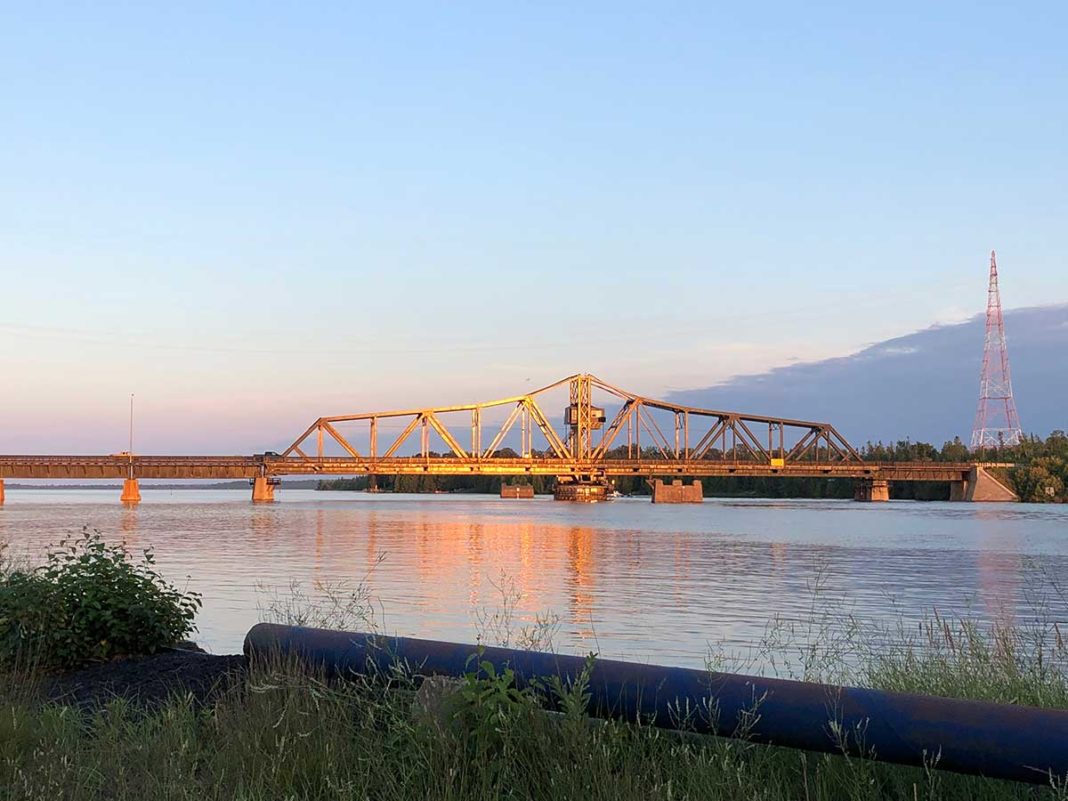Emergency situations a community burden, Ministry of Transportation insists
MINDEMOYA—The Ministry of Transportation (MTO) is responsible for repairs should the swing bridge in Little Current experience a significant breakdown, but continued flow of goods and services is up to municipalities and First Nations. The Manitoulin Municipal Association (MMA) will be requesting Emergency Measures Ontario (EMO) hold a tabletop exercise and discussion on how a contingency plan would be implemented.
“In the event of a full closure of the Little Current swing bridge, the MTO would immediately activate its Continuity of Operations Plan,” MTO media relations representative Tanya Blazina disclosed to The Expositor in an email after a June 21 meeting between MTO representatives and members of the MMA. “Depending on the nature and duration of the emergency, the ministry works in collaboration with various agencies and partners, including the ministry’s maintenance contractor, Canadian Coast Guard, Transport Canada, Ontario Provincial Police, municipalities, our Indigenous partners and more.”
As previously reported, the MMA had agreed to meet with the MTO in person to discuss its concerns with the newly revised Little Current swing bridge emergency plan. MMA members had voiced concerns that the current plan only addresses a short-term emergency should the bridge become inoperable, not a long-term shutdown. The MMA wants the plan tied in with all of Manitoulin Island and the municipalities’ own community emergency plans.
MMA Chair Ken Noland pointed out, “As municipalities, we aren’t clear if in a catastrophic failure, what actual plans there are to get goods and services to and from Manitoulin, and we are in need of addressing this in any emergency plans.”
The three MTO representatives at the meeting shared a draft of the emergency plan, said Mr. Noland.
“The big thing I took away from the meeting is that if there is a catastrophic failure of the bridge, it is not part of MTO’s emergency plan to fix it. That was up to the municipalities, which did not make sense.”
“It is not our highway (where the bridge is located),” noted Jack Bould.
If food and services need to be brought in, municipalities and First Nations would be responsible. MTO suggested MMA reach out to Emergency Measures Ontario.
Lee Hayden, reeve of Gordon/Barrie Island added that while MTO officials said they were sure they could get the swing bridge closed in an emergency situation, “They don’t have a quick fix, and don’t know how.”
Central Manitoulin Mayor Richard Stephens said MTO should fix the bridge, but Island communities would have their own emergency management plans. “We would work with the MTO and the other agencies and ministries involved,” he said.
A total failure of the swing bridge would affect all of the Island, said Linda Debassige, ogimaa kwe of M’Chigeeng First Nation. She has discussed the issue with Patsy Corbiere, chair of the United Chiefs and Councils of M’Nidoo M’Nissing and chief of Aundeck Omni Kaning First Nation. “We all have different resources,” she said. “Chief Corbiere offers our support from the tribal council.”
Ogimaa kwe Debassige pointed out they may see quicker action through Indigenous Affairs, which also works with other ministries. “We’d like to offer our support in the discussions,” she said.
“We are in a unique situation here on Manitoulin and it only makes sense to look at having a coordinated effort in an emergency situation,” said Bryan Barker, mayor of Billings Township.
Mayor Barker suggested there should be an Island-wide EMO coordination. “The MTO response would be to get the bridge fixed but all of this doesn’t take into account a catastrophic failure. There was some confusion on the way they (MTO) and we are looking at handling an emergency. There seems to be a disconnect.”
In the MTO plan, they must act diligently to solve the problem in the event the bridge is down for a significant amount of time, NEMI Mayor Al MacNevin said. “Our community would declare an emergency so EMO would be involved and a community control group would be activated in our community.”
The police and other agencies would be part of the community plan, Mayor MacNevin added. It would include a list of resources and available food, for example. “I think the MTO would be willing to sit at the table with EMO for a tabletop discussion session,” he said.
Mayor Barker said an example provided at the MTO meeting was that during an Island-wide wildfire emergency, communities would have to work together as a group. “We would incorporate individual plans but have an Island-wide plan as well.”
Island municipalities and First Nations have already successfully worked together, during the COVID pandemic, pointed out Central Manitoulin councillor Derek Stephens.
Ogimaa kwe Debassige said that group had a mandate to coordinate and connect with every municipality and First Nation within 12 hours. She said the idea now would be for the communities to get together and establish that relationship.
“Maybe this would be a good first step,” Mr. Noland said.
MMA passed a motion to contact EMO about setting up a gathering for Island municipalities and First Nations to at least discuss who would be responsible for what in a colossal emergency.





